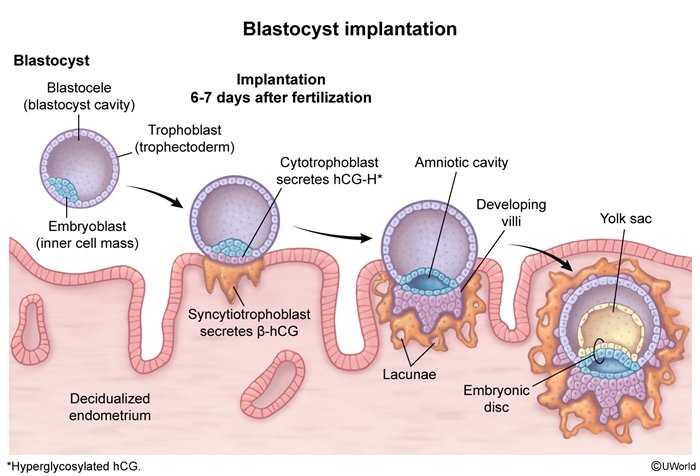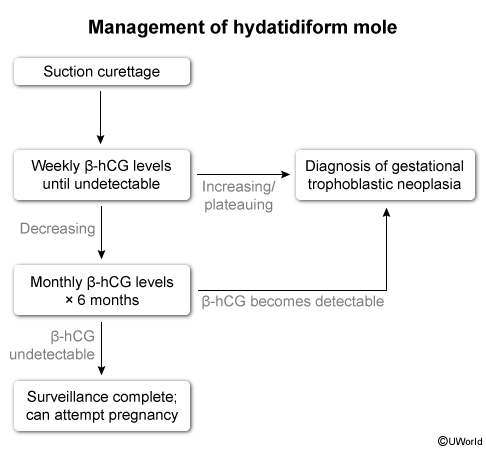Gestational Trophoblastic Neoplasia
Article Sections
Introduction
Gestational trophoblastic neoplasia (GTN) refers to a group of rare but malignant disorders arising from placental trophoblasts. It includes invasive mole, choriocarcinoma, placental site trophoblastic tumor (PSTT), and epithelioid trophoblastic tumor (ETT). These disorders occur following pregnancy and may lead to persistent abnormal vaginal bleeding and positive β-hCG.
"Gestational trophoblastic disease" (GTD) is a broader term that includes the GTNs and benign disorders (eg, complete hydatidiform mole, partial hydatidiform mole) that arise from abnormal proliferation of placental trophoblasts.
Pathogenesis
Early in pregnancy, the blastocyst develops a layer of trophoblastic cells that implant into the endometrium and form the placenta (Figure 1). Abnormal fertilization events or mutations can lead to neoplasia (ie, persistent abnormal cellular proliferation) of these trophoblastic cells, leading to GTN. GTN is therefore genetically distinct from the patient because it arises from placental (fetal) tissue. Unlike in a normal pregnancy, the trophoblastic cells of GTN have the potential to invade the myometrium and metastasize.
Continue Learning with UWorld
Get the full Gestational Trophoblastic Neoplasia article plus rich visuals, real-world cases, and in-depth insights from medical experts, all available through the UWorld Medical Library.
Figures

